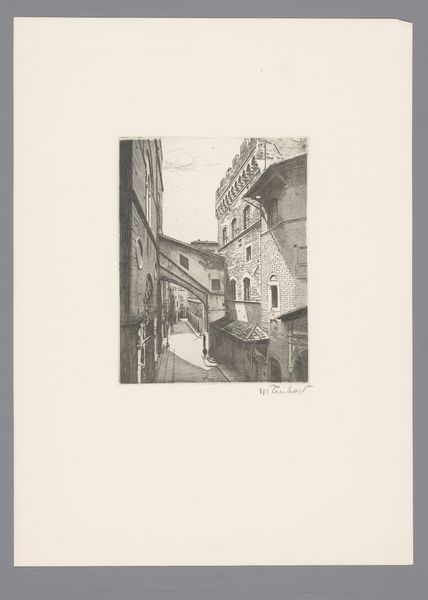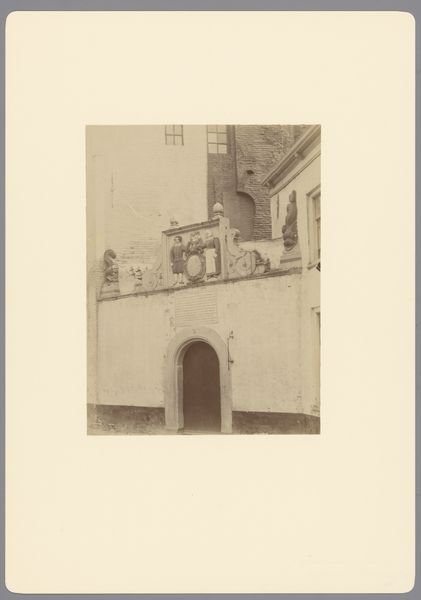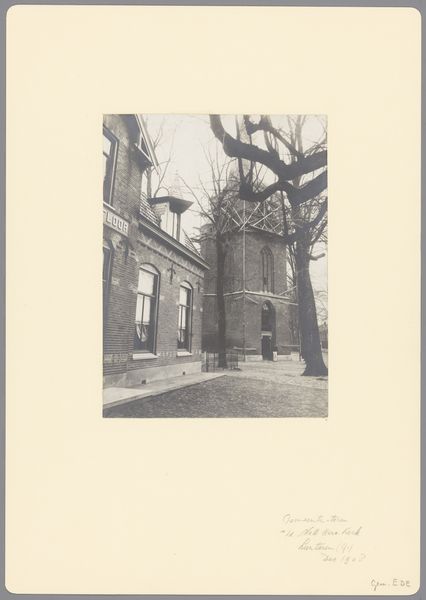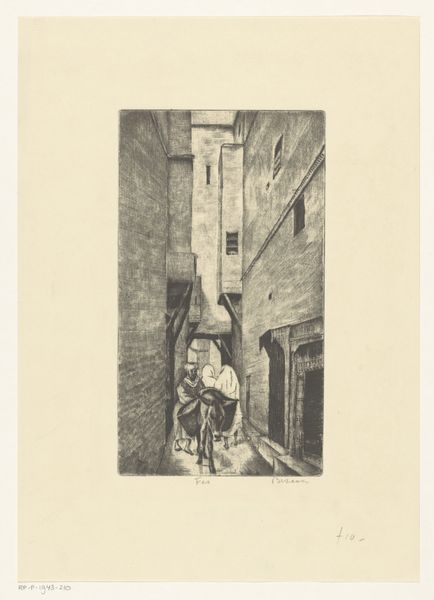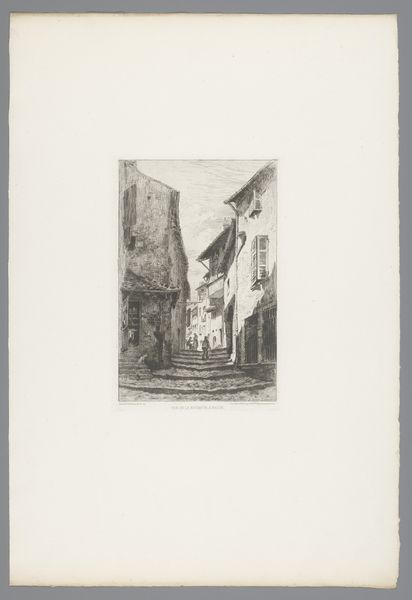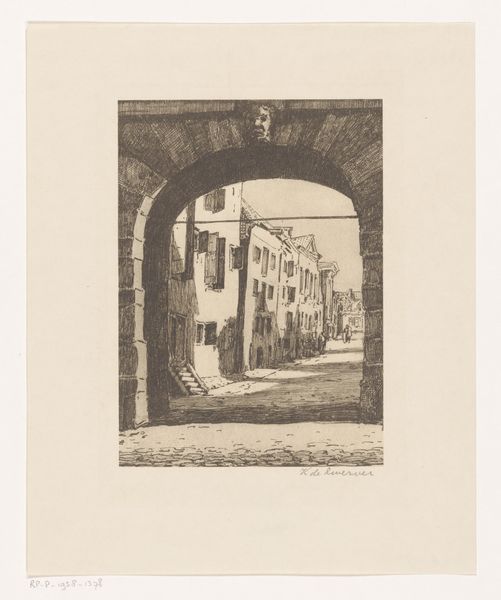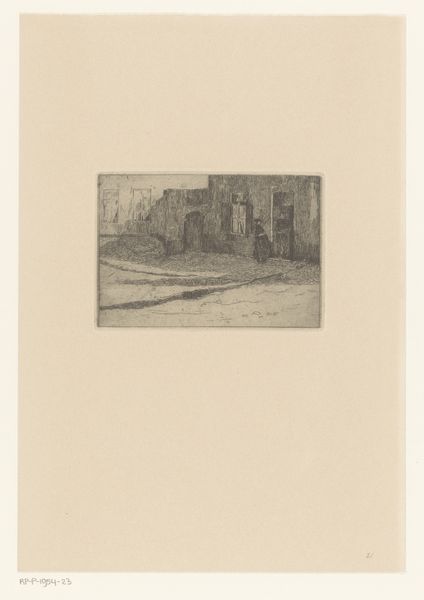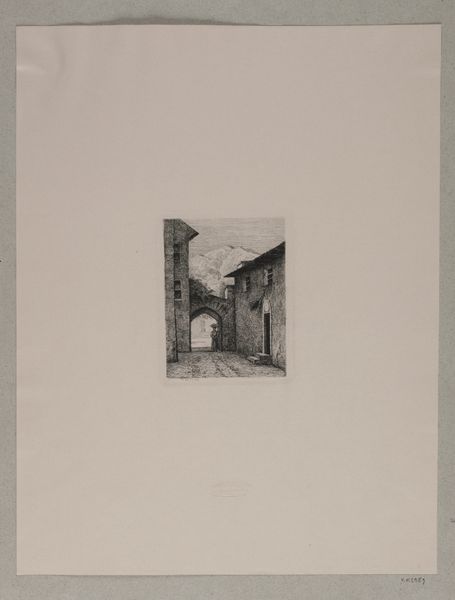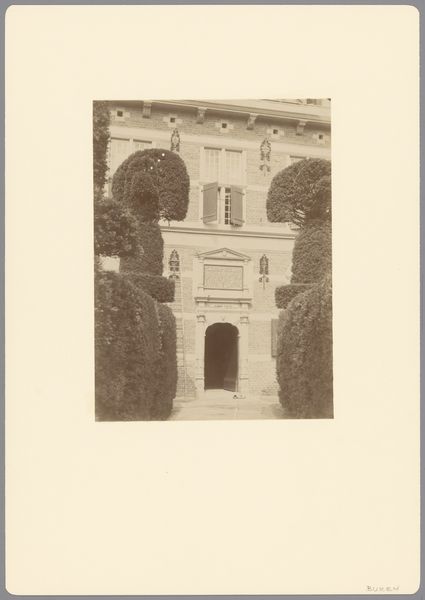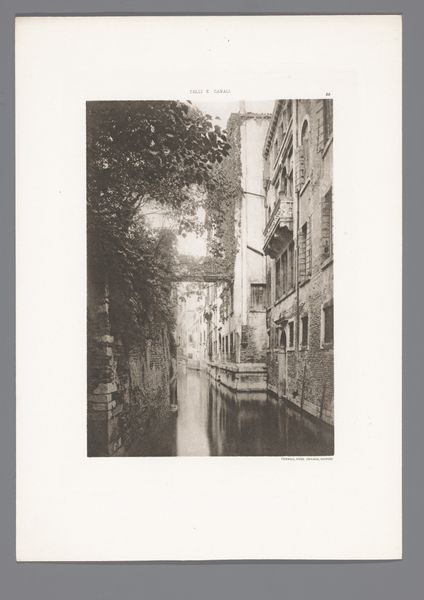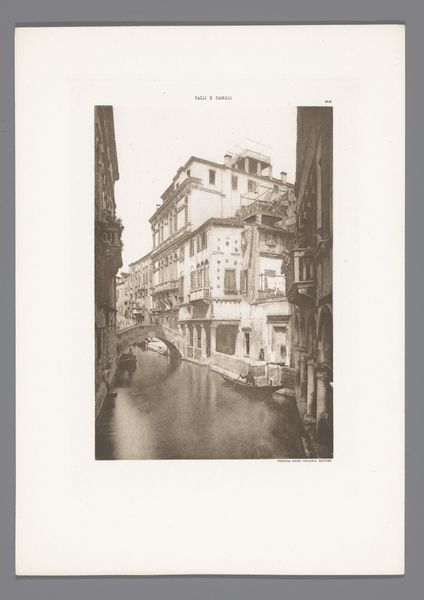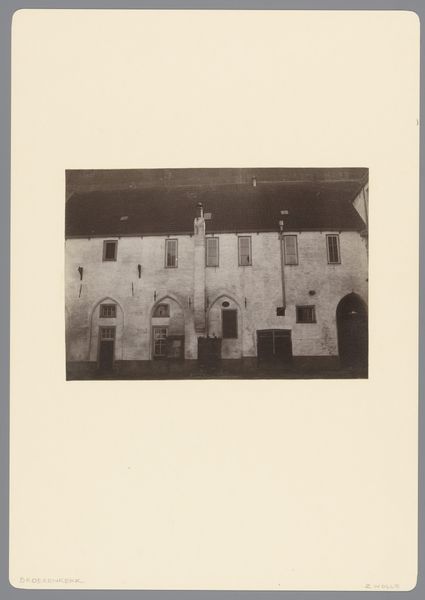
Binnenplaats van het Palazzo del Bargello te Florence 1886 - 1927
0:00
0:00
guglielmotaubert
Rijksmuseum
print, photography, gelatin-silver-print, architecture
# print
#
photography
#
geometric
#
gelatin-silver-print
#
cityscape
#
architecture
#
realism
#
monochrome
Dimensions: height 162 mm, width 128 mm
Copyright: Rijks Museum: Open Domain
Editor: This is "Binnenplaats van het Palazzo del Bargello te Florence," a gelatin silver print made sometime between 1886 and 1927 by Guglielmo Taubert. It’s a monochrome image of a courtyard. I'm struck by the almost clinical precision of the photograph. What catches your eye? Curator: Immediately, I think about the production of this print. The gelatin silver process, widely adopted in this era, allowed for mass reproduction. Consider the shift from unique photographic prints to potentially countless copies. This alters the status of the photograph as a precious object. How does the accessibility of imagery affect our understanding of architecture, like this Palazzo? Editor: That's interesting! It makes me think about how photography democratized the viewing experience. Curator: Precisely! Think about the labor involved, too. Gelatin silver printing relies on factory-produced materials, commercial darkrooms. Who benefits from this industrialization of image-making? And how does it affect the perception of realism itself, when it is filtered through commercial interests? Editor: So, instead of just seeing a beautiful building, you’re thinking about the whole economic and social network that made the image possible? Curator: Exactly. The aesthetic experience is tied to these material realities. What social function did this building play originally, and how does its depiction in this commercially reproducible print alter that? Does it reinforce hierarchies, or democratize access to art and culture? Editor: I never thought about photography this way! It’s fascinating to consider how much more is communicated beyond the literal depiction. Curator: The material circumstances always shape the artistic expression, don't they? This piece reminds us that art objects exist within larger systems of production and consumption.
Comments
No comments
Be the first to comment and join the conversation on the ultimate creative platform.
